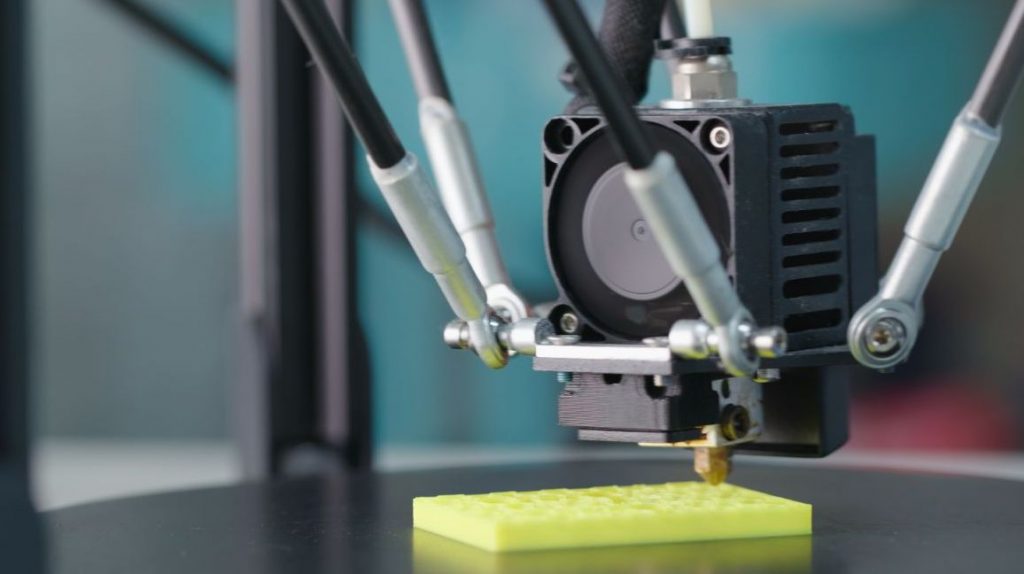What are the differences between commodity and engineering plastics?
- Design
- Cost
- Application
Commodity and engineering plastics are two types of thermoplastics that are categorized based on their differences in design, cost, and application. These plastics are made up of polymers, which are long-chain molecules that maintain their connections through intermolecular forces. This property makes them useful when making different products and tools used in several industries. Plastic products made from commodity and engineering plastics are found everywhere, and each material has properties that make them suited for different uses. In this post, we will be exploring some of the differences between commodity vs. engineering plastics.
Design
Commodity plastics are plastics that are found in common household items, hence the name. They are made up of resin that is produced at high volume for a low cost. They are typically made for single-use products, and they are designed to be durable yet disposable.
Commodity plastics are not designed to have outstanding mechanical properties and are meant to be used in products where such properties are not needed. They can be found in simple, everyday products, and they are the most familiar plastic products to consumers.
The most common types of commodity plastics are polyethylene, polypropylene, polyvinyl chloride, and polystyrene. Many of these are better known by their trade names. For example, polyethylene terephthalate and polyvinyl chloride are commonly referred to as PET and PVC. Polystyrene is most commonly known in its foam form, trademarked as Styrofoam.
On the other hand, engineering plastics are designed to fulfill more mechanical purposes. They are meant to withstand chemical, mechanical, and environmental conditions that commodity plastics are not able to handle. Additionally, engineering plastics are not designed to be produced on the same scales as commodity plastics. Instead, they are usually designed and manufactured in smaller quantities to meet a more specific goal or function.
Engineering plastics are also designed to have different characteristics. They have high mechanical strength, mechanical functionality, chemical and heat resistance, chemical stability, and (for some engineering plastics) even the ability to self-lubricate.
These characteristics make engineering plastics highly desired by different industries. Their design allows them to place traditional materials and even be combined with other materials like glass to add to their desirable properties further.
Cost
Commodity plastics are by nature readily available and easy to process. They are capable of being mass-produced due to their simple structure and properties. The materials needed to produce commodity plastics are inexpensive, easy to process, adding to their easy production.
Many aspects of the production process can also be used for a majority of plastic products. This means that there are not many specialized machines or technology needed to make most products made from this material. This is why commodity plastics tend to be the cheap and readily available option. Many everyday consumer products use them due to their low cost and fast production.
Contrarily, engineering plastics need specialized processes to meet the specific mechanical or thermal properties of the end product. This is because the products made from engineering plastics need to withstand harsh conditions, and need to be strongly resistant to use temperature and other environmental factors.
This also means that their production also relies on a skilled workforce to carefully create these desirable properties in the end products. This skilled workforce is also needed in operating the specialized machines used in the production process. This process is time-consuming and uses costly materials and machinery to create engineering plastics.
Applications
Commodity plastics have a wide variety of uses and are one of the most common components in mass-produced objects. They are found in single-use plastics such as packaging, cups, cutlery, and more. Aside from these single-use plastics, they are also used in other products, most of which are found in almost every household across the world. They can be found in electronic casings, Tupperware, children’s toys, kitchen appliances, and many more items you find yourself using daily.
There are numerous types of commodity plastic, and each one has endless applications in the modern world. From a previously stated example comes Acrylonitrile Butadiene Styrene (ABS), which is found in those electronic cases and toys in your home. Another example is High-Density Polyethylene (HDPE) which is a component in water pipes and water bottles. Low-Density Polyethylene (LDPE) is another common plastic, which is used to create several products from resealable bags to packaging foam.
While engineering plastics may be less common in your household, it still has a variety of applications in your workplaces. There are many examples of engineering plastic in various industries, such as the medical, mechanical, and food industries. They are most commonly used in applications requiring low friction and high environmental resistance.
An example is Polybutylene Terephthalate (PBT), which can be found in connector strips, valves, and in some household appliances due to their thermal resistance and rigidity. Another example is Polyetherketone (PEEK), which is used to make bearings, cable insulation, and mechanical pumps. Polyethylene Terephthalate (PET) is another example and is a component in a majority of parts used in automobiles for their strength, rigidity, density, and moisture resistance.
Key Takeaway
Both commodity and engineering plastics have their place in several modern applications and industries. Both have many useful properties and capabilities, which leads to their endless uses in household and professional settings. When choosing what type of materials to use as your components, knowing the differences between commodity vs. engineering plastics is critical in ensuring the functionality, usability, and cost-effectiveness of your products.
